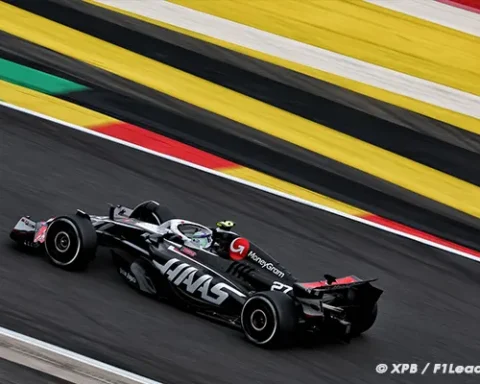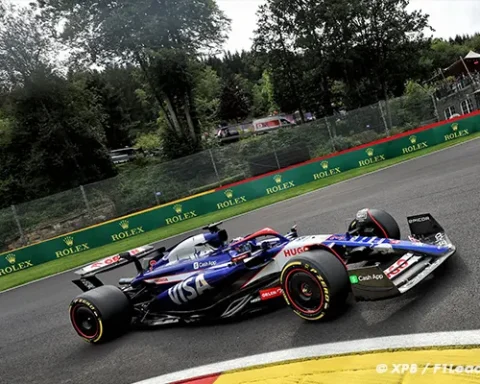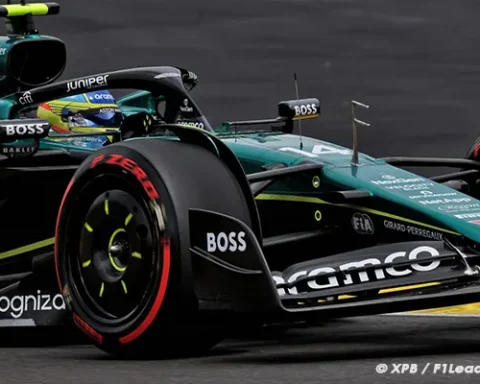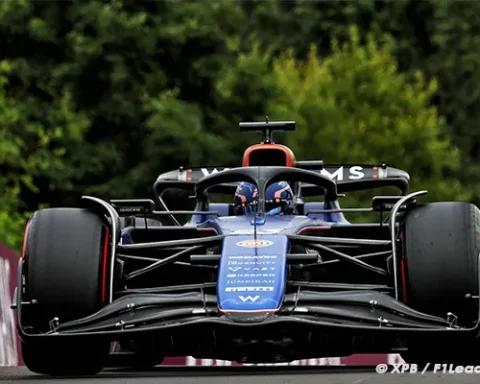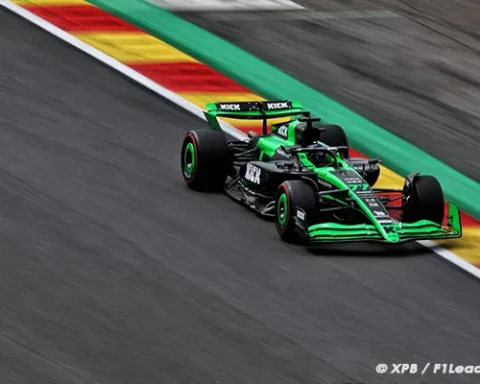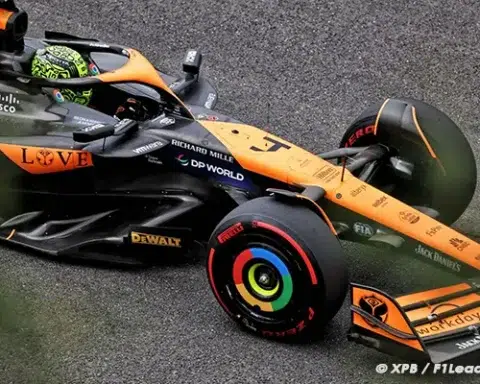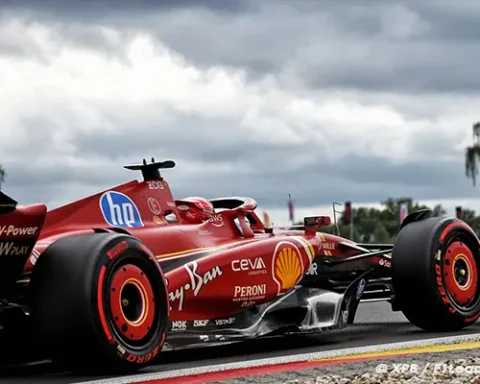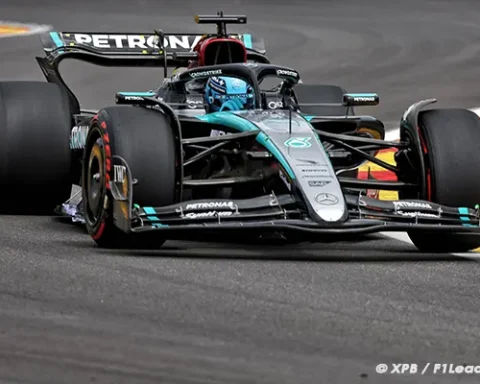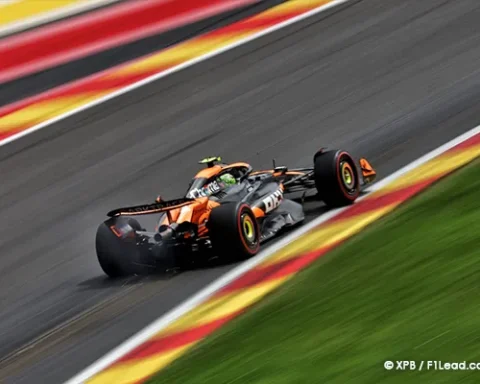As the 2024 F1 season approaches, key questions loom: Will new regulations alter team dynamics? Can underdogs challenge the front-runners? And, crucially, how will driver changes impact the championship’s landscape in this high-stakes year?
Mercedes F1 faces a challenging era, grappling with aerodynamic shifts and the ban on crucial hydraulic systems. Adapting to these changes is vital for regaining their former glory in the competitive F1 landscape.
For the past two years, Brackley’s engineers have misjudged the F1 concept, failing to anticipate the phenomenon of porpoising and having an overly static view of the aerodynamic functioning of the new ground effect F1 cars. Consequently, the W13 and W14 were light-years behind the level the Silver Arrows achieved from 2014 to 2020.
James Allison has declared: his colleagues have identified the weaknesses in their approach and know what they need to do to produce a competitive single-seater. He has implemented a new method to avoid falling into the same traps as in the past.
For Mercedes, this represents a significant cultural shift. In the past, their machines could rely on a range of hydraulic systems for managing suspensions. These devices are now banned, even as controlling the aerodynamic platform with stiff suspensions (necessary for the functioning of the Venturi flat floors) is more crucial than ever.
Mercedes will likely choose the same suspension geometry as Red Bull (pull rod at the front, push rod at the rear), but will they succeed in exploiting a concept that Milton Keynes created and has been mastering for two years? Possibly. But even if they do, where will the W15 stand compared to an inevitably advanced RB20, considering the Winged Bull wouldn’t have been idle over the winter?
Could Red Bull’s expected dominance make F1 less popular?
Last year, F1 saw some good races, a handful of entertaining battles, and… a demonstration of Red Bull’s overwhelming superiority since the introduction of new technical regulations in 2022.
Last year’s RB19 (simply the best single-seater in the history of Formula 1) had no rival, with Ferrari and Mercedes – wrongly – opting to continue with their own concepts. Behind its wheel, Max Verstappen easily clinched his third world championship, and the team secured 21 wins in 22 Grands Prix.
Without the early season surprises from Aston Martin and McLaren’s second-half championship surge, the competition would have been (even more) dull to follow, although reasons other than Red Bull’s dominance explain why Grands Prix might be less exciting to watch.
If the Winged Bull maintains its technical lead and the competition doesn’t catch up, the upcoming season could be monotonous – except for Max Verstappen’s fans, of course. Pairing the Dutchman with a top driver (like Norris or Russell) would add some spice, but that’s not Christian Horner’s choice. At least, Mercedes’ dominance from 2014 to 2016 was offset by internal squabbles between Lewis Hamilton and Nico Rosberg.
What to Expect from the 2024 F1 Season. What to Expect from the 2024 F1 Season
Will Ferrari disappoint Charles Leclerc again?
Is Charles Leclerc‘s talent being wasted at Ferrari? This question arises as the Italian F1 team has rarely provided him with a car capable of leading the pack, despite his immense talent.
It all started promisingly. In his first season at Maranello, the Monegasque driver secured two victories, ten podiums, and seven pole positions, thanks to a particularly fast car (powered by an engine whose legality was questioned by the FIA…).
However, in 2020 and 2021, things worsened, with the Prancing Horse failing to provide its star with a car worthy of his brilliance. Things improved in 2022 with the innovative SF-50, which enabled him to achieve three impressive victories. But after a strong start to the season, the scarlet car gradually succumbed to an increasingly lighter Red Bull as the races progressed. Its successor, the SF-23, was intended to be a refinement but turned out to be a very precise machine, excessively degrading its tires in races.
For 2024, the year Leclerc’s contract expires, Ferrari has decided to revise its approach and adopt the Red Bull concept. While Fred Vasseur has improved the team’s performance during Grand Prix weekends, the engineers he has recruited to offset certain departures (including that of David Sanchez to McLaren) won’t arrive in Maranello for several months… In short, one can only hope that Enrico Cardile and his colleagues have assimilated the philosophy of the 2022 and 2023 champions to finally provide Charles Leclerc with a machine capable of competing at the forefront.
Will McLaren Still Have the Best Car Behind Red Bull?
Last year, despite outdated facilities, McLaren managed to transform its car. Through better, more decentralized resource utilization, the MCL60 became the second-fastest car behind the untouchable Red Bull RB19.
That Woking achieved such a transformation without altering its monocoque is quite remarkable and suggests that improvements could be even more significant this winter. McLaren’s aerodynamicists have understood the Red Bull concept, but last year, they were limited by the monocoque’s shape. This will no longer be the case with the 2024 chassis, which will be able to accommodate better suspensions:
“I am almost certain that everyone will invest in their suspension systems,” predicts Andrea Stella. “These are crucial as they enable aerodynamic development and play a fundamental role in tire performance.”
Joining the engineers who led this excellent development on January 1st are two notable recruits: David Sanchez from Ferrari, in charge of performance and concept, and Rob Marshall, former Red Bull, who will oversee engineering and design.
Finally, a new simulator and a new wind tunnel (operational since only September) should enable the team to reach a new level.
Should Stake F1’s Competitiveness Concern Audi?
Last year, the Alfa Romeo C42 was frequently the slowest car on the grid, which is far from ideal for a team set to become Audi’s official F1 team in 2026.
Moreover, the team’s performance has declined compared to 2022, with Hinwil dropping from sixth to ninth in the constructors’ standings, scoring a mere sixteen points. Based on an end-of-life concept and minimally developed, the C43 quickly plateaued, while its direct rival, the AlphaTauri AT04, moved up to mid-grid thanks to multiple developments.
If this lack of development persists into 2024, Audi might start to worry. True, infrastructure has been upgraded (with new CFD capabilities available since last June and a fully operational simulator, etc.), but it’s likely that Audi slightly underestimated the investments needed this year and next to be a top team by 2026.
In short, the German manufacturer will have to dig deeper into its pockets than initially thought. While Gernot Döllner, the boss, has confirmed the brand’s commitment to Grand Prix racing, unlocking additional funds will take time and would greatly benefit from some good early-season results to speed up the process.
Understandably, another season at the back of the grid could seriously disrupt Audi’s plan to be “very competitive” within the next three years.
Could Red Bull’s Anticipated Dominance Diminish F1’s Popularity?
Last year, Formula 1 delivered some good races, a handful of entertaining battles, and a display of Red Bull’s overwhelming superiority since the introduction of new technical regulations in 2022.
The RB19, arguably the best single-seater in Formula 1 history, had no rivals last year, as Ferrari and Mercedes mistakenly chose to continue with their own concepts. Behind its wheel, Max Verstappen easily clinched his third world championship, with the team winning 21 out of 22 Grands Prix.
Without the early-season surprises from Aston Martin and McLaren’s second-half championship resurgence, the competition would have been even more dull to follow, though reasons other than Red Bull’s supremacy explain why Grands Prix might be less thrilling.
If the Winged Bull maintains its technical edge and rivals don’t step up, the upcoming season risks being monotonous – except for Max Verstappen’s fans, of course. Pairing the Dutchman with a top driver like Norris or Russell would add excitement, but this isn’t Christian Horner’s strategy. At least the Mercedes dominance from 2014 to 2016 was offset by internal rivalries between Lewis Hamilton and Nico Rosberg.
Will Ferrari Disappoint Charles Leclerc Again?
The question of whether Charles Leclerc’s talent is being squandered at Ferrari is valid, considering the Italian team has rarely provided him with a car capable of competing at the forefront, despite his immense talent.
Initially, things looked promising. In his first season at Maranello, the Monegasque driver claimed two victories, ten podiums, and seven pole positions, thanks to an exceptionally fast car (powered by an engine whose legality was questioned by the FIA).
Unfortunately, in 2020 and 2021, the situation worsened, with the Prancing Horse failing to give its star a car worthy of his skills. Things improved in 2022 with the innovative SF-50, allowing him three impressive victories. But after a strong start to the season, the scarlet racer gradually yielded to an increasingly agile Red Bull as the races progressed. Its successor, the SF-23, intended as a refinement, turned out to be a highly specialized car, excessively wearing its tires in races.
For 2024, the year Leclerc’s contract is set to expire, Ferrari has decided to revise its approach and adopt the Red Bull concept. While Fred Vasseur has enhanced his team’s performance on Grand Prix weekends, the engineers he recruited to fill certain vacancies (including David Sanchez, who left for McLaren) won’t arrive in Maranello for several months… In short, one can only hope that Enrico Cardile and his colleagues have absorbed the philosophy of the 2022 and 2023 champions to finally provide Charles Leclerc with a car capable of leading the pack.
What to Expect from the 2024 F1 Season. What to Expect from the 2024 F1 Season
Will McLaren Again Have the Best Car Behind Red Bull?
Last year, despite outdated facilities, McLaren managed a remarkable transformation of its car. Through better and more decentralized resource utilization, the MCL60 became the second fastest car, trailing only the unbeatable Red Bull RB19.
The fact that Woking achieved such a transformation without modifying its monocoque is noteworthy, suggesting that even greater progress could be made this winter. McLaren’s aerodynamicists have understood the Red Bull concept, but last year they were limited by the shape of the monocoque. This will no longer be the case with the 2024 chassis, which will be able to accommodate better suspensions:
“I am almost sure that everyone will invest in their suspension systems,” predicts Andrea Stella. “These are crucial as they enable aerodynamic development and play a fundamental role in tire performance.”
Joining the engineers responsible for this outstanding development on January 1st were two significant recruits: David Sanchez from Ferrari, responsible for performance and concept, and Rob Marshall, formerly of Red Bull, overseeing engineering and design.
Finally, a new simulator and a new wind tunnel (operational since only September) should enable the team to take another significant step forward.
Should Stake’s Competitiveness Worry Audi?
Last year, the Alfa Romeo C42 was often the slowest car on the grid, which is not ideal for a team set to become Audi’s official F1 outfit starting in 2026.
Moreover, their performance has declined compared to 2022, with Hinwil dropping from sixth to ninth in the constructors’ standings, scoring a mere sixteen points. Based on a concept at the end of its development cycle and underdeveloped, the C43 quickly reached a plateau, while its direct rival, the AlphaTauri AT04, moved up to mid-grid through multiple developments.
If this development shortfall continues into 2024, Audi might start to worry. True, the infrastructure has been upgraded (with new CFD capabilities available since last June, and the simulator is now fully operational, etc.), but Audi likely underestimated the investments needed for this year and the next to be a top team by 2026.
In short, the German manufacturer will have to invest more than initially anticipated. While Gernot Döllner, the brand’s head, has confirmed their commitment to Grand Prix racing, unlocking additional funds will take time and would greatly benefit from some good early-season results to expedite the process.
Clearly, another season at the back of the grid could seriously disrupt Audi’s plan to be “very competitive” within the next three years.
What to Expect from the 2024 F1 Season. What to Expect from the 2024 F1 Season
- Read More>Adrian Newey’s Childhood Dream Shapes F1 Career
- Following us on Facebook and Twitter.

